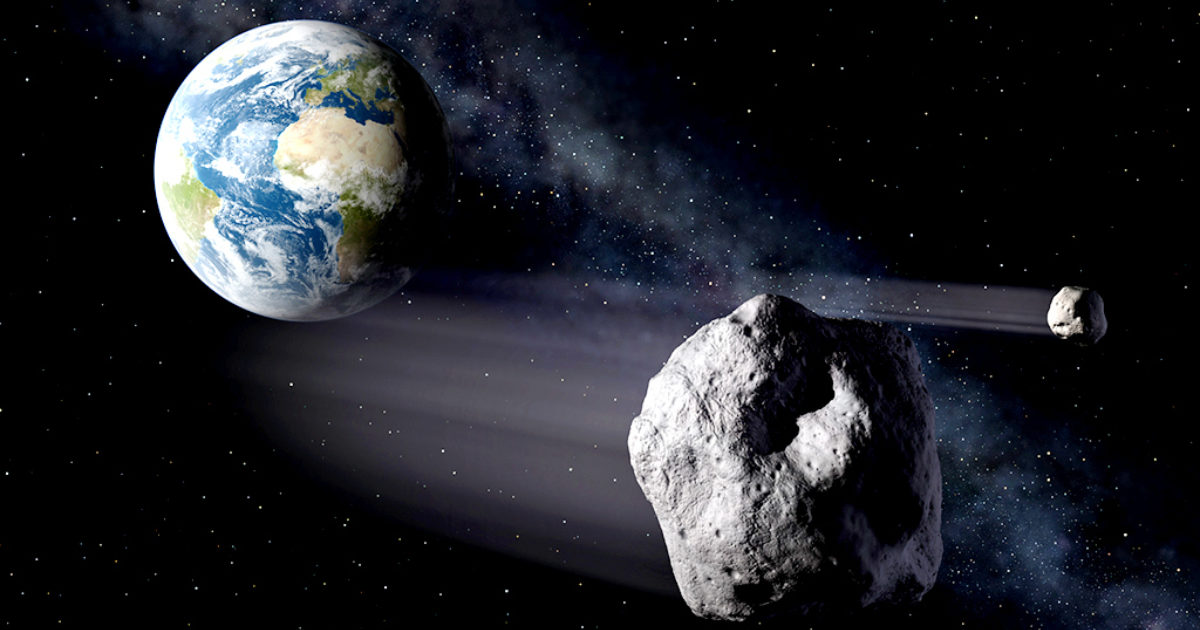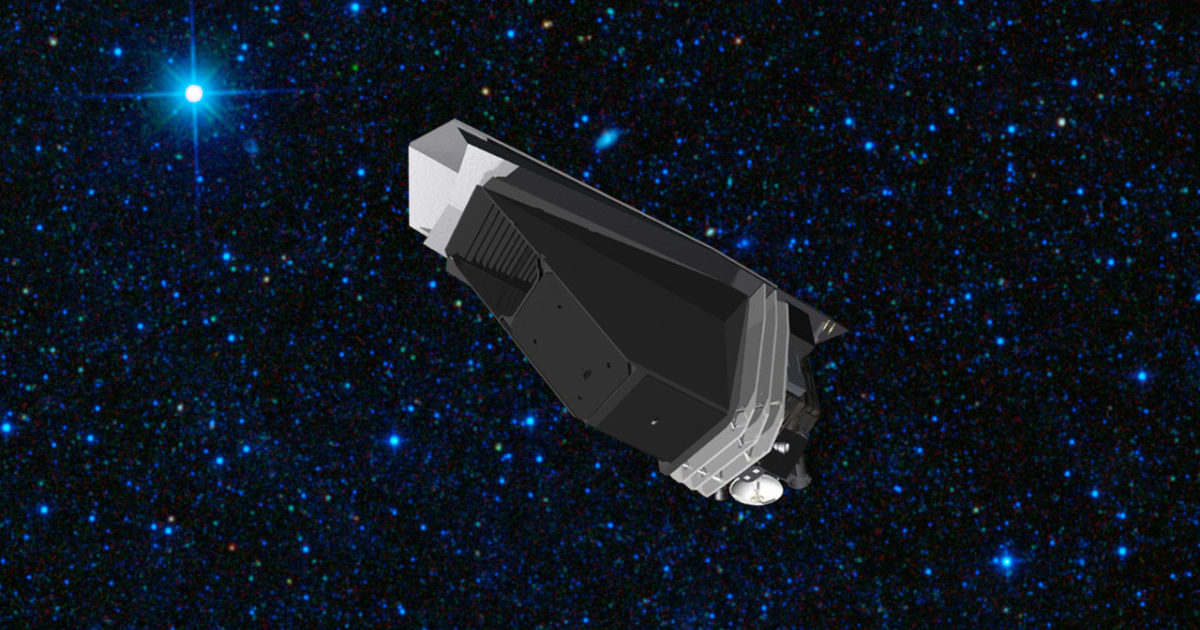NASA's DART will impact asteroid Dimorphos on 09/26 in first-ever test of planetary defense
- Thread starter Forerunner
- Start date
You are using an out of date browser. It may not display this or other websites correctly.
You should upgrade or use an alternative browser.
You should upgrade or use an alternative browser.
Holy shit, was not expecting it to be that effective, super impressive.
You could say… super effective
From my understanding, while DART is important, the bigger issue with asteroids is we're usually too late at detecting them. I hope NASA doubles down on their detection methods and then builds out a strategic fleet of spacecraft designed for different sized asteroids that are ready at a moment's notice. If the Space Force is going to do anything, this seems like exactly the kind of the thing they should do.
NEO Surveyor is the successor to the NEOWISE mission (which wasn't even originally designed for finding Near Earth Objects):From my understanding, while DART is important, the bigger issue with asteroids is we're usually too late at detecting them. I hope NASA doubles down on their detection methods and then builds out a strategic fleet of spacecraft designed for different sized asteroids that are ready at a moment's notice. If the Space Force is going to do anything, this seems like exactly the kind of the thing they should do.

NEO Surveyor - Wikipedia
It's planned to launch in 2026 and should give us a significant boost in our ability to detect hazardous objects.
Thanks for the info. I'm looking forward to that!NEO Surveyor is the successor to the NEOWISE mission (which wasn't even originally designed for finding Near Earth Objects):

NEO Surveyor - Wikipedia
en.wikipedia.org
It's planned to launch in 2026 and should give us a significant boost in our ability to detect hazardous objects.
New Planetary Defense Strategy Outlines Key US Government Goals

New Planetary Defense Strategy Outlines Key US Government Goals | OSTP | The White House
By Matthew Daniels, OSTP Assistant Director for Space Security & Special Projects Ainikki Riikonen, OSTP Policy Analyst Planetary defense entered a new era last year when NASA’s Double Asteroid Redirection Test (DART) mission demonstrated for the first time the ability to alter an asteroid’s...
Planetary defense entered a new era last year when NASA's Double Asteroid Redirection Test (DART) mission demonstrated for the first time the ability to alter an asteroid's orbit. The successful mission was achieved with the support of a worldwide observation campaign, and growing global interest in hazardous near-Earth objects (NEOs) – asteroids and comets that could come into Earth's neighborhood. Despite these breakthroughs and growing awareness, less than half of NEOs capable of serious damage on Earth have been catalogued.
That's why the White House Office of Science and Technology Policy is releasing the National Preparedness Strategy and Action Plan for Near-Earth Object Hazards and Planetary Defense. It establishes six key goals for the decade ahead:
- Enhance NEO detection, tracking, and characterization capabilities.
- Improve NEO modeling, prediction, and information integration.
- Develop technologies for NEO reconnaissance, deflection, and disruption missions.
- Increase international cooperation on NEO preparedness.
- Strengthen and routinely exercise NEO impact emergency procedures and action protocols.
- Improve U.S. management of planetary defense through enhanced interagency collaboration.
I know people think the Space Force is a meme but this should 100% be under their domain and their main priority aside from protecting US satellites. Time to stockpile "DARTs".
New Planetary Defense Strategy Outlines Key US Government Goals | OSTP | The White House
By Matthew Daniels, OSTP Assistant Director for Space Security & Special Projects Ainikki Riikonen, OSTP Policy Analyst Planetary defense entered a new era last year when NASA’s Double Asteroid Redirection Test (DART) mission demonstrated for the first time the ability to alter an asteroid’s...www.whitehouse.gov
DART would not be sufficient to counter any real threat to the earth. Development must be done on more powerful spacecraft.
Detection can and should be worked on right now however. The sooner a potential threat is detected, the easier it will be to deflect it from hitting Earth. The only thing holding us back is budget.
Detection can and should be worked on right now however. The sooner a potential threat is detected, the easier it will be to deflect it from hitting Earth. The only thing holding us back is budget.
Is there an estimate on what kind of resources it would take to fully tackle the problem?DART would not be sufficient to counter any real threat to the earth. Development must be done on more powerful spacecraft.
Detection can and should be worked on right now however. The sooner a potential threat is detected, the easier it will be to deflect it from hitting Earth. The only thing holding us back is budget.
The first step is tracking them which I imagine would need a lot more observation stations. I guess most would be on Earth but maybe several would be scattered around the solar system since we can't see what's happening on on the other side of the sun.
Then there's hitting them with a mass that's big, fast, and early enough to meaningfully shift their path.
I'm just wondering if this is a problem that humanity can currently solve if we take a few trillion out of the piggy bank or if we're still waiting for tech to get better.
Is there an estimate on what kind of resources it would take to fully tackle the problem?
The first step is tracking them which I imagine would need a lot more observation stations. I guess most would be on Earth but maybe several would be scattered around the solar system since we can't see what's happening on on the other side of the sun.
Then there's hitting them with a mass that's big, fast, and early enough to meaningfully shift their path.
I'm just wondering if this is a problem that humanity can currently solve if we take a few trillion out of the piggy bank or if we're still waiting for tech to get better.
I don't know any numbers. One good source is the Planetary Society (the space advocacy group founded by Carl Sagan and Bill Nye):

Defend Earth
How The Planetary Society works to decrease the risk of Earth being hit by an asteroid or comet.
 www.planetary.org
www.planetary.org
It wouldn't take a lot to increase our detection capabilities. We need to start looking for and cataloguing earth orbit crossing asteroids. The best platform for this is a space based telescope, but no existing ones are really optimized for this task. Fortunately, it would not cost much for one that was. Neo-surveyor is the Planetary Societies proposed solution:

NEO Surveyor, protecting Earth from dangerous asteroids
NASA’s NEO Surveyor is a space telescope that will search for and study near-Earth objects.
 www.planetary.org
www.planetary.org
Edit: Doing some googling, it looks like Neo Surveyor's cost has recently doubled to 1.2 billion. Not expensive as JWST, but still not cheap.
Last edited:

